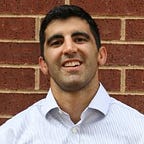Lessons from a bootstrapped exit
We recently had the chance to catch up with Chris Wood, one of the founders of Clario Medical Imaging, about his successful exit to Intelerad. Clario Medical Imaging is workflow management software for radiologists. Learnings from Chris’ story are below.
At first, Clario was unsuccessful. Clario started in 2005. The company had the license to 10 patents on some interesting display technology that had achieved minor commercial success in the area of forensics. Chris and his team wanted to apply the technology to the radiology space. Chris became CEO and by 2008 he and the team realized the company was going to fail. Vendors simply refused to work with the business and there was no market traction. Chris and the board had the option to shut the company down or pivot, so they pivoted when there was about $1mm left in the bank.
Pivots are based on what you learned from failing. The pivot was based on learnings from the field — Chris and his team realized there were a lot of issues with handling workflows in radiology, so the pivot set out to create a workflow orchestrator for radiologists. His investors put in some cash just before the recession of 2008 and they were selling to their customer within 3 months. Once they got the system into the hands a few customers, they realized there was a huge unmet need for workflow optimization, especially for firms with hundreds of radiologists.
The initial revenue model was wrong. At first, Clario’s revenue model was a one-time license fee with ongoing maintenance fees. Eventually they switched to a recurring revenue model. The problem with the license fee model was that it made no sense to have to support multiple versions of the code — if a customer buys a license, eventually their version of the code becomes the older version, and after a few years you’re stuck supporting too many versions of the code for years of customers. Getting everyone on a subscription was the best way to make sure the customer had the best and most recent product on one code base, while also getting paid for it. The license model was also more cash intensive.
Direct sales reps are a must. Early on, the company had a distributor/channel partner selling the product. Very quickly, Chris and the team realized no one could sell the software better than his team, especially not some 3rd party vendor. Clario determined a direct sales model was best and focused on building out a sales team.
Running lean saved the company. The pivot in 2008 forced the company to operate lean going forward. Money spent on the product before the pivot was essentially wasted so Clario’s investor appetite was more limited than it otherwise would be. Additionally the recession really limited fundraising through 2010.
Clario did not go the typical venture route. They funded this business with private equity and angel investors, not venture capital. The best investors for the company were actual radiologists that invested. It gave the team confidence because radiologists invest in what they know, it felt like a seal of approval from experts in the space, and the radiologists became evangelists within the industry.
Scaling cash efficiently is hard. The hardest part of scaling is doing so relative to the cash position. The company didn’t raise monster rounds. They had customers right away, built a real business, and spent within their means, not necessarily according to funds raised. Chris recognized this company wouldn’t have a billion dollar exit in an IPO, so he had to scale pragmatically and limit dilution. Having a self sustaining business is really important when your market is smaller.
The relationship with the acquirer was in place for years. You cant time your own exit when you’re a small startup that will ultimately sell to a strategic. You have to be opportunistic and identify when someone will value you based on strategic value, not just financials. In this case, the ultimate acquirer has been talking to Chris for a few years and they had common customers — this was the most important thing in Chris’ view because the technology worked well together. There was no questions the tech worked together and that customers wanted to buy it together, so the strategic fit was there. The company took 10 years to get to an exit, which is not unheard of in healthcare.
You may not need a banker if you know the strategics. Clario did not retain a banker — in Chris’ view there were 5 possible acquirers for the business and he knew them all. Everyone knew each other, everyone’s products worked well together, and while the company did receive a few term sheets, the one that made the most sense was from Intelerad.
Big thanks to Chris Wood, one of the co-founders of Clario for sharing his story with us.
Visit us at blossomstreetventures.com and email us directly with Series A or B opportunities at sammy@blossomstreetventures.com. You can also connect with me on LI. We invest $1mm to $1.5mm in growth rounds, inside rounds, and other ‘special situations’ all over the US & Canada.
